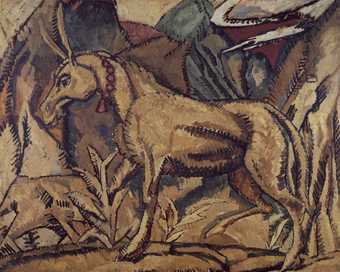
Duncan Grant
Vanessa Bell (1942)
Tate
In 1913 Roger Fry opened the Omega Workshops in Fitzroy Square and there employed a number of young artists in the manufacture or decoration of a great variety of objects of household use. Grant at once showed a particular aptitude for such work; according to Fry himself, ‘his fellow artists all recognised the peculiar charm, the unexpected originality, and the rare distinction of his ideas’.
The principle underlying this decorative art was the exact opposite of the later ideal of functionalism, the belief that fitness for purpose produced beauty as a sort of by-product. On the contrary, ornament of a kind that was wholly superfluous, as superfluous as the decoration of a Rococo palace, was applied to everything and often covered every square inch of the top of a table, a textile, or a panelled wall.
At a time when critics have been exceptionally busy finding labels for every distinguishable phase of painting during the last fifty years Duncan Grant’s art has somehow escaped any classification; no one has ever succeeded in putting him into any group of artists that can be labelled. It might be thought that this is because he is an eclectic, as in some ways he evidently is, but if eclecticism implies any lack of individuality then the term is obviously not to be applied to a painter with so strongly marked a style of his own that it is recognisable at first sight.

